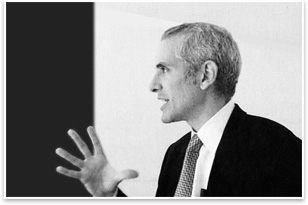
| Preston Scott Cohen
Education Firm’s design philosophy Will you continue practice, or focus exclusively on the GSD? I am directly involved in the design part of the projects and will continue to be, and hope to be taking on new work as time goes on. In fact, I think the relationship between practice and the school is absolutely essential. They stimulate each other. This exchange between practice and academic work goes to the heart of what I’m doing, thinking through problems of architecture. I think these problems of synthesis and of history and typology are articulated in the academic context in one way and in the office another way, and that they are clearly reciprocal. It’s the reciprocity between the two that is so essential to my life. Currently reading There is another book that I just finished that I loved, Leviathan, by Paul Auster. The book is incredible. It struck me as having a lot to do with architecture in a very indirect way. This peculiar story is about a man who gets into a lot of trouble in a very odd way but goes through a lot of living vicariously through other people’s fantasies and ways of being in the world. He’s writing about all of this as well. It’s about writing, but what was interesting was that he had to track other people’s lives in a very intricate way. These other lives were all tangled up in such unexpected ways. It was the process of looking at the way people lived that seemed to me to get to the heart of how architects live. They are always imagining how other people are living, as well as living in those very same spaces along with those people. It’s real and it’s also imaginary. That’s what architecture is all about in a way. It’s very interesting in that sense. The book seemed to really describe that experience, but not be about architecture itself. What will you bring to the GSD as chair? We can look at the question of sustainability in the same way. It also goes to the heart of so many of these aspects of architecture: how people live, how people think about transportation vis-à-vis that building’s position in the city. The way the city is thought of relative to the placement of buildings in it has so much to do with sustainability, but of course how we live in the interior, how light and air are part of that experience, how the use of materials or the shape of the building optimizes or does not optimize the deployment of resources as far as materials are concerned. All of these things go to the questions of architecture at all levels. These two lenses, if we think synthetically, can move into all of these domains and reorganize the way we think about architecture and ask students to think in a whole new way about the relationship of these fundamental conditions in architecture, whether they be the form, the tectonics, the environment, or the ways of living. All these things can come under these umbrellas. Those two questions are really essential for me right now. They’re two major concerns of this time in architecture, and I really hope to bring a new focus on these questions. Other priorities? I think we need to stimulate each other by being immersed in discussion at a very high level. That’s going to be a top priority, to bring people into a higher level of discussion, and that will galvanize everyone around these two areas that I described to you, the digital and the environmental questions that are on everyone’s mind. I think it’s important to have different views. I thrive on having different views on the table. I cannot bear to be in an academic environment where everyone is in agreement. It is unbearably boring. We have to have debate. It’s very important that we set those terms, put things into play according to people taking positions and having convictions about these positions. I think the students are in a period where they’re suffering from lack of commitment to particular ideas. We have to think critically, and we have to think from different viewpoints and debate those views if we’re going to develop our thoughts to a higher level. That’s what sharpens our minds, so this first of all has got to become an intensely socialized environment according to the kind of discussion taking place. That’s what the GSD is all about. What challenges and opportunities do you see for architectural education in the next 5–10 years? I think one of the challenges to overcome is facing the question of the environmental only from the point of view of technology. We have to question it on other levels. It is fundamentally aesthetic as well. Architects must find a way to bring this question of the environmental back into the fold of architecture and back into this dialectic between the aesthetic and the technical. I think right now the problem with the sustainability questions is that they are falling outside of that dialectic between the aesthetic and the technical. We’ve got to bring them back into the heart of that. It’s tough to do it, but if we don’t, students and architects will not be thinking about the environmental questions as they’re forming their designs. It becomes an accessory to that formation if we don’t integrate it … It has to become part of the unconscious knowledge of architects. I hope that at the end of the next 10 years, that’s where we are. |
||
Copyright 2008 The American Institute of Architects. All rights reserved. Home Page |
||
news headlines
practice
business
design
Read the Boston Globe interview with Moshen Mostafavi, dean of the GSD.

